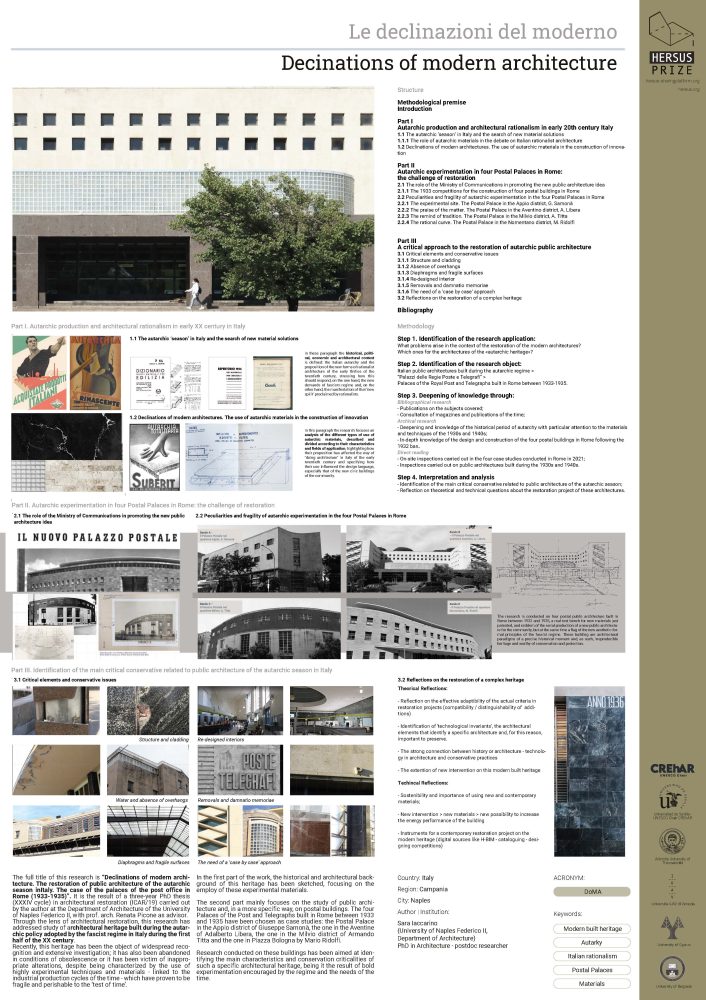Declinations of modern architecture
Research Honorary Award / Shortlisted

The full title of this research is “Declinations of modern architecture. The restoration of public architecture of the autarchic season inItaly. The case of the palaces of the post office in Rome (1933-1935)”. It is the result of a three-year PhD thesis (XXXIV cycle) in architectural restoration (ICAR/19) carried out by the author at the Department of Architecture of the University of Naples Federico II, with prof. arch. Renata Picone as advisor.
Through the lens of architectural restoration, this research has addressed study of architectural heritage built during the autarchic policy adopted by the fascist regime in Italy during the first half of the XX century.
Recently, this heritage has been the object of widespread recognition and extensive investigation; it has also been abandoned in conditions of obsolescence or it has been victim of inappropriate alterations, despite being characterized by the use of highly experimental techniques and materials – linked to the industrial production cycles of the time – which have proven to be fragile and perishable to the ‘test of time’.
In the first part of the work, the historical and architectural background of this heritage has been sketched, focusing on the employ of these experimental materials.
The second part mainly focuses on the study of public architecture and, in a more specific way, on postal buildings. The four Palaces of the Post and Telegraphs built in Rome between 1933 and 1935 have been chosen as case studies: the Postal Palace in the Appio district of Giuseppe Samonà, the one in the Aventine of Adalberto Libera, the one in the Milvio district of Armando Titta and the one in Piazza Bologna by Mario Ridolfi.
Research conducted on these buildings has been aimed at identifying the main characteristics and conservation criticalities of such a specific architectural heritage, being it the result of bold experimentation encouraged by the regime and the needs of the time.
Author: Sara Iaccarino